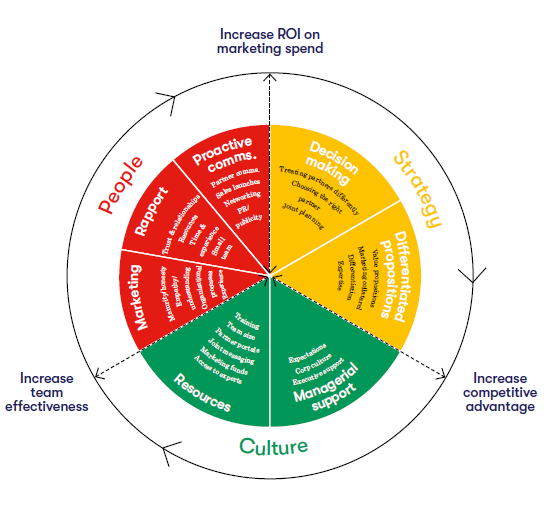Which partners should I focus on? Important questions to ask yourself...
How do you identify the criteria of an ideal partner?
Knowing which partners to work with is the Holy Grail of partner marketing.
Some organisations have hundreds or thousands of partners that they could work with and invest in, but the marketing dollars they spend on them do not always see a good return.
With limited marketing resource and budget, and tougher ROI criteria they need a smarter approach.
Engagement V strategic fit
When I was working in the channel, we quite often had partners who were super keen to engage, and they would turn up to all the events and engage with our executives and as a result, would get a lot of attention and probably their unfair share of partner marketing budget. But I always wondered whether these were the best partners to invest in.
In recent years I’ve seen many vendors try to break into big, large systems integrators and very quickly give up on this mission because there are many stakeholders and they’re very hard to get engaged. But the potential return on making one of these large relationships work has a huge potential financially.
This led us to engage the University of Huddersfield to do some research on this topic and they came up with seven factors for a successful partnership.
These factors map into two overall success criteria: Strategic Fit and Engagement. When these criteria are optimised, partnerships fly.

Taking this insight, Coterie Marketing developed a partner prioritisation digital assessment that positions partners into a Boston Matrix in four categories:
- Investment ready: Partners with high engagement with a high strategic fit.
- Good relations: Partners with high engagement with a low strategic fit.
- Aligned strategically: Partners with low engagement with a high strategic fit.
- Tread carefully: Partners with low engagement and low strategic fit.
You can then use this insight and segmentation to allocate resources appropriately.
- Investment ready: These are your superstar partners with whom you should focus your investment. Generally, you’ve got a good engagement and they’re a good strategic fit. The objective is to increase engagement with this partner as you move forward.
- Good relations: This is a partner that has great engagement but is not necessarily a perfect strategic fit. It is worth acknowledging that you’ve got a good relationship with this partner but be careful how much of your time and money you spend on them as you might not necessarily receive the best return.
- Aligned strategically: These partners are a good strategic fit, but you have lower engagement. Generally, these partners fall into the category of being possibly a bit hard to work with, but it is worthwhile pursuing them. I recommend you look at a stakeholder management tool to try and get better engagement with these partners.
- Tread carefully: These partners have low engagement and low strategic fit. This group of partners you may want to keep a close eye on but not invest any time in them.
It is also a great approach for senior sales managers to have a holistic view of the team – and then constantly monitor progress.
Questions to ask yourself…
How do your partners line up when considering strategic fit?
- Investment – Is the partner willing to invest in training/accreditation, can they support the product and price?
- Is there a good revenue/ profit opportunity with the partner?
- Is the partner marketing ready? E.g., do they have a GDPR contact database, and a good digital footprint?
- Do they offer a good market opportunity e.g., are they a market leader, and wrapping around our product/service?
- Are they motivated? E.g., Do they sell additional products/services from our solution?
How do your partners line up when considering engagement?
- Can they sell our solution e.g. Do they have a joint value proposition, can they pitch at a good level and have they developed a pipeline?
- Can they market e.g. Is there a named marketing contact and are they experienced and have a joint plan?
- Can we work together e.g. good trust between our companies, a business plan, and regular reviews?
- Are the right stakeholders across the business – product/sales/marketing and at an exec level onboard?
The more definite “YES” versus a “maybe” or “no” – then the more ready the partner is for invest and the probability of gaining a good return increases.
By considering these questions you can objectively prioritise partners when considering resource and investment and avoid the “he who shouts loudest” marketing. It will also give you insight into success characteristics of a partner for future recruitment. It is also a great factual way to improve sales and marketing performance through action-orientated plans.




